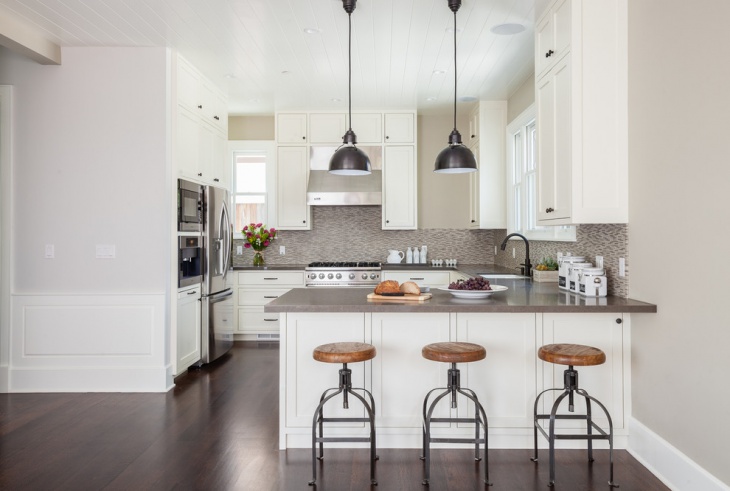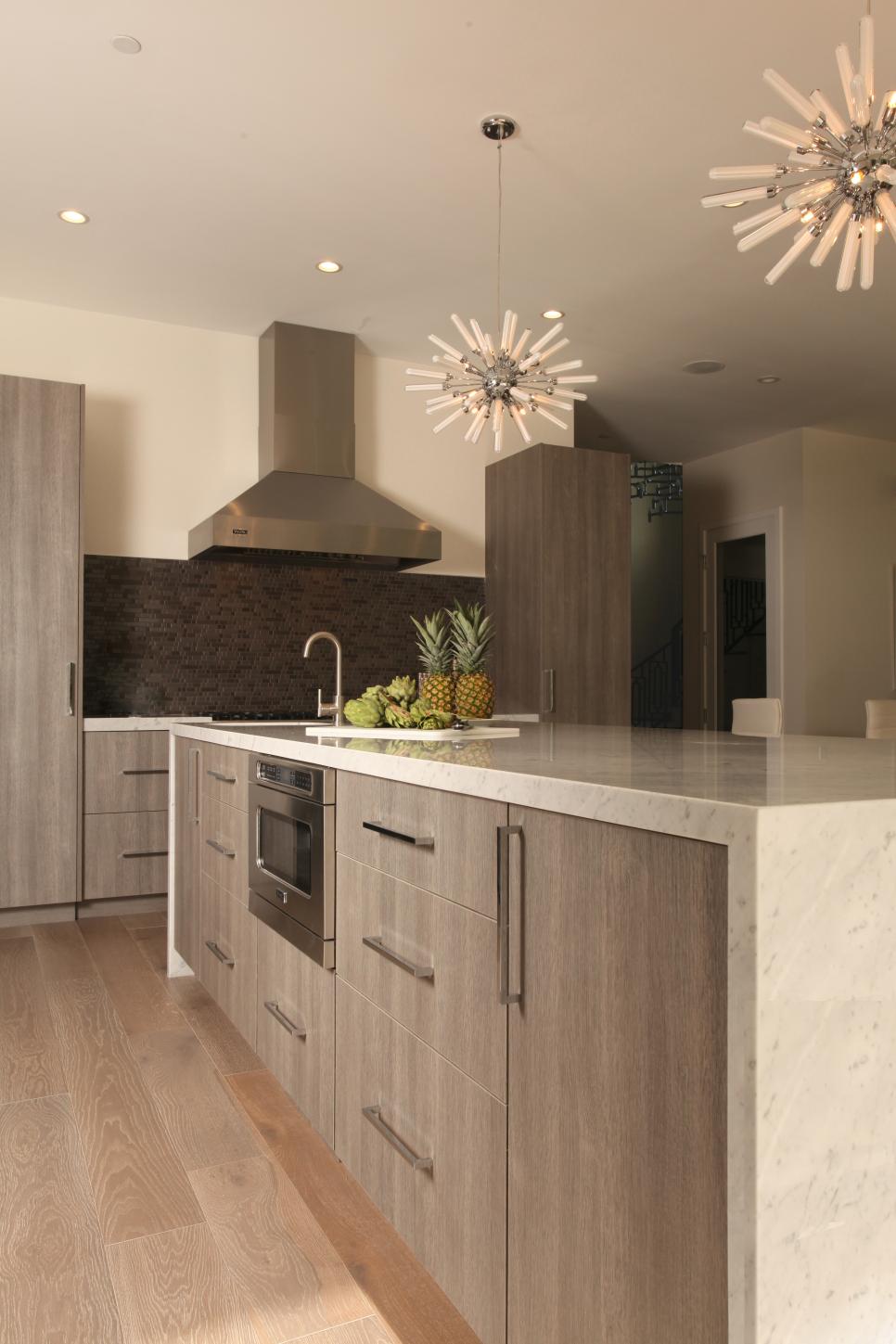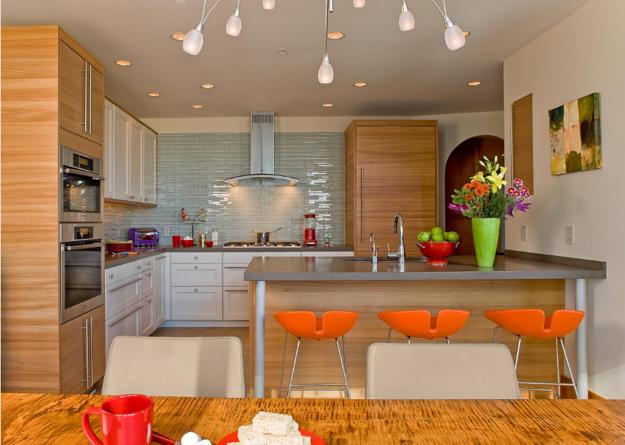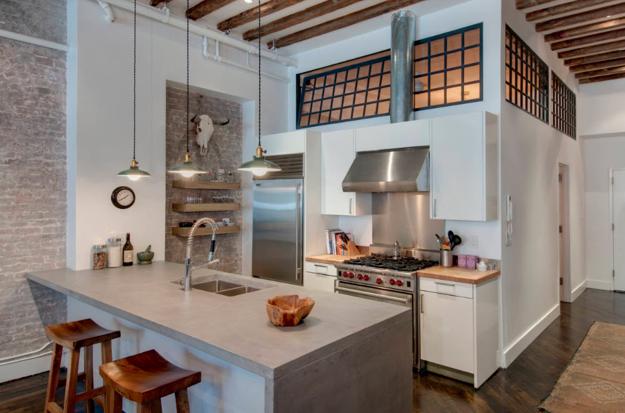Kitchen peninsula lighting is a vital aspect of designing a functional and aesthetically pleasing kitchen. Peninsulas serve as a bridge between the cooking and dining areas, often functioning as a prep space, breakfast bar, or additional storage area. The right lighting enhances this multifunctionality by ensuring adequate illumination for various tasks and creating a warm and inviting ambiance. Selecting lighting for a kitchen peninsula requires careful consideration of style, purpose, and layout, as the wrong choice can detract from both usability and design cohesion.
One popular lighting option for kitchen peninsulas is pendant lighting. Pendants are versatile fixtures that hang from the ceiling, offering focused light over the peninsula. These lights come in a variety of styles, shapes, and sizes, making them an excellent choice for any design theme, whether modern, traditional, or eclectic. For task-oriented spaces like a peninsula, pendant lights provide concentrated illumination that is ideal for chopping, mixing, or serving meals. Using multiple pendants evenly spaced across the peninsula ensures consistent lighting coverage and enhances visual appeal.

Incorporating layered lighting is another effective strategy. Layered lighting combines different types of fixtures, such as task, ambient, and accent lighting, to create a dynamic and adaptable atmosphere. For a kitchen peninsula, task lighting ensures practicality, ambient lighting softens the space, and accent lighting highlights design features. For instance, pendant lights can handle task lighting, while recessed ceiling lights or wall sconces can provide general illumination. The combination not only improves functionality but also elevates the aesthetic of the kitchen.
Under-cabinet lighting is an understated yet impactful option for peninsulas attached to cabinetry or walls. These fixtures are installed beneath upper cabinets or along the underside of a floating shelf, casting light directly onto the peninsula’s surface. LED strips or puck lights are common choices for this purpose, offering a sleek and modern look while eliminating shadows. This lighting solution is particularly useful for enhancing visibility during food preparation, and it can double as subtle mood lighting during evening hours.

Dimmable lighting fixtures add versatility to a kitchen peninsula, allowing you to adjust brightness levels to suit different activities and times of the day. Bright task lighting can be used for meal prep during the day, while dimmer, more subdued lighting can create a cozy ambiance during dinners or gatherings. Installing dimmer switches is an easy way to incorporate this feature, offering flexibility without requiring separate fixtures for every lighting need.
For those aiming to make a statement, oversized pendant lights or chandeliers can serve as bold focal points above the peninsula. These fixtures draw the eye and add personality to the kitchen, making them a popular choice for homeowners who want to infuse their space with style. Oversized lights work best in open-concept kitchens, where they won’t overwhelm the area. When choosing statement pieces, balance is key—ensure the design complements other elements in the kitchen without overshadowing them.

LED lighting has become a go-to choice for kitchen peninsula lighting due to its energy efficiency, longevity, and design adaptability. LED bulbs are available in various color temperatures, ranging from warm white to cool daylight, allowing you to tailor the light to your preferences. They can also be integrated into smart home systems, offering features like remote control, scheduling, and voice activation. LED lights are not only practical but also align with eco-conscious living, reducing energy consumption and maintenance costs over time.
Recessed lighting is another excellent option for kitchen peninsulas, particularly in kitchens with lower ceilings or a minimalist design aesthetic. These fixtures are installed flush with the ceiling, providing unobtrusive illumination that doesn’t clutter the visual space. Recessed lights can be strategically positioned above the peninsula to ensure even lighting distribution, and they work well in combination with other lighting types, such as pendants or under-cabinet lights.
Glass fixtures are a great choice for adding an elegant touch to your kitchen peninsula lighting. Clear or frosted glass shades on pendant lights can diffuse light softly, creating a warm and welcoming environment. Alternatively, colored or textured glass can inject a pop of personality and serve as a design accent. Glass fixtures also pair beautifully with other materials, such as brushed metal or wood, to create a cohesive and stylish look.

Industrial-style lighting has gained popularity in modern and transitional kitchens. Fixtures with exposed bulbs, metal finishes, or a rugged design aesthetic can lend a touch of character to the space. Industrial lighting is particularly effective in kitchens with a neutral or monochromatic palette, as it provides contrast and visual interest. Pairing industrial fixtures with Edison-style bulbs can further enhance the ambiance, adding a vintage charm to the peninsula area.
Track lighting offers a flexible and customizable solution for illuminating a kitchen peninsula. This type of lighting consists of a mounted track with adjustable fixtures that can be aimed in different directions. Track lighting is ideal for kitchens with unusual layouts or multifunctional peninsulas, as it allows you to target light exactly where it’s needed. Modern track lighting designs are sleek and stylish, making them a practical yet visually appealing option.
Another innovative idea is incorporating backlit panels or LED strips into the underside or edges of the peninsula countertop. This type of accent lighting creates a floating effect, adding a futuristic vibe to the kitchen. Backlit panels work particularly well with translucent materials like frosted glass or quartzite, highlighting their unique patterns and textures. While this option is more decorative than functional, it can enhance the overall atmosphere and make the peninsula a standout feature.

Choosing the right fixture height is crucial when designing kitchen peninsula lighting. Pendant lights, for example, should hang approximately 30-36 inches above the countertop to avoid obstructing the view while providing effective illumination. Adjusting the height of fixtures can also influence the room’s ambiance, with higher placements creating a more open feel and lower placements offering a cozier atmosphere.
The color and finish of lighting fixtures should align with the kitchen’s overall design scheme. Brushed nickel, matte black, and antique brass are popular finishes that work well in various styles. For a cohesive look, match the fixture finish with other hardware in the kitchen, such as cabinet handles or faucets. On the other hand, mixing finishes can add an eclectic touch, but this approach requires careful curation to avoid a mismatched appearance.
Finally, consider the importance of natural light when designing peninsula lighting. Large windows, skylights, or glass doors can flood the kitchen with daylight, reducing the need for artificial lighting during the day. Strategically placing the peninsula near a natural light source can enhance its usability and make the space feel more open. Combining natural and artificial lighting creates a balanced and inviting kitchen environment.

Common Mistakes to Avoid
Improper Fixture Spacing: Crowding pendant lights or placing them too far apart can lead to uneven illumination. Ensure the fixtures are evenly spaced for balanced lighting coverage.
Ignoring Light Temperature: Mismatched color temperatures can make the kitchen look disjointed. Choose bulbs with a consistent temperature, such as warm or cool white, to maintain harmony.
Overlooking Dimmer Compatibility: Not all fixtures or bulbs are dimmer-compatible, which can limit flexibility. Check compatibility before installation to avoid functionality issues.
Neglecting Scale and Proportion: Fixtures that are too large can overpower the space, while those that are too small may not provide adequate light. Choose appropriately sized lights to suit the peninsula’s dimensions.
Skipping Maintenance Considerations: Choosing intricate designs that are difficult to clean or maintain can lead to long-term frustration. Opt for practical designs that combine style with ease of upkeep.
Failing to Layer Lighting: Relying on a single type of lighting often results in an unbalanced and impractical setup. Combine task, ambient, and accent lighting for optimal functionality.

What is the best type of lighting for a kitchen peninsula?
Pendant lights are a popular choice for kitchen peninsulas because they provide focused illumination and come in a variety of styles to match different aesthetics. However, layered lighting that includes recessed and ambient lighting works best for balancing functionality and ambiance.
How many pendant lights should I use over a kitchen peninsula?
The number of pendant lights depends on the length of your peninsula and the size of the fixtures. A general rule of thumb is to space pendants 24-30 inches apart and ensure they’re centered above the peninsula. For shorter peninsulas, two pendants may suffice, while longer ones might need three or more.
What height should pendant lights be above a peninsula?
Pendant lights should generally hang 30-36 inches above the countertop. This height ensures they provide effective lighting without obstructing sightlines or interfering with activities on the peninsula.

Can I use dimmable lights for my kitchen peninsula?
Yes, dimmable lights are an excellent option for kitchen peninsulas. They allow you to adjust the brightness to suit different tasks and moods. Ensure your fixtures and bulbs are compatible with dimmer switches before installation.
How do I match lighting fixtures with my kitchen design?
Choose lighting fixtures that complement your kitchen’s overall style, whether it’s modern, traditional, or industrial. Consider the finishes, such as brushed nickel or matte black, and ensure they harmonize with other elements like cabinet hardware and faucets for a cohesive look.
What are some energy-efficient options for peninsula lighting?
LED lights are the most energy-efficient choice for kitchen peninsula lighting. They consume less energy, last longer, and are available in various styles and color temperatures. Smart LED fixtures can further enhance efficiency with features like scheduling and remote control
Peninsula Kitchen Designs with Integrated High Seating Areas and Bar Furniture

Related Posts:
- Cost Of Installing Recessed Lighting In Kitchen
- Kitchen Island Lighting Spacing
- Round Fluorescent Kitchen Lights
- Industrial Style Kitchen Pendant Lights
- Fly Lights For Kitchens
- Best Color Temperature For Kitchen Lighting
- Tuscan Kitchen Light Fixtures
- Under Cabinet Led Puck Lighting Kitchen
- Rustic Country Kitchen Lighting
- Kitchen Light Temperature